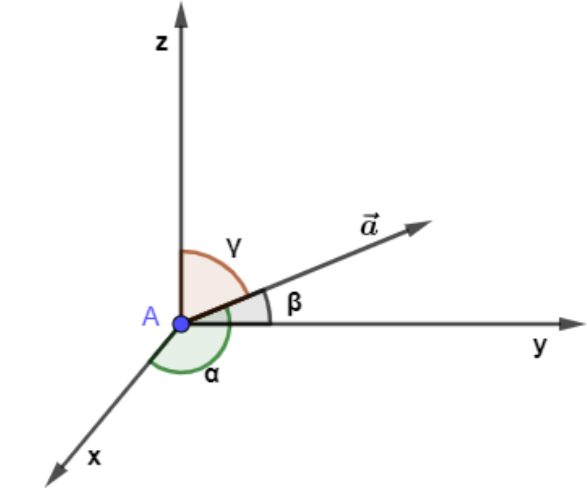Question
Question: If line makes an angle \[120{}^\circ \] and \[60{}^\circ \] with the positive directions of X and Z ...
If line makes an angle 120∘ and 60∘ with the positive directions of X and Z axes respectively then the angle made by the line with positive Y-direction is
(a) 150∘
(b) 60∘
(c) 135∘
(d) 120∘
Solution
First, we will be using the concept of direction of the cosine vector. So, we will understand that first. Then we will be using its property which is given as the sum of the squares of the direction cosines is equal to one. In Mathematical terms, it is written as cos2α+cos2β+cos2γ=1 . We are given values of α=120∘ , γ=60∘ . On putting values and solving, we will get the answer.
Complete step-by-step solution:
Here, we will use the Directions of the Cosine vector. So, we will understand the concept of this. The direction cosines of the vector a are the cosines of the angles that the vector forms with the coordinate axes. Here, we are given an angle of 3 directions and the remaining 1 we have to find. So, for this, we will use the concept that the sum of the squares of the direction cosines is equal to one.
We will draw the direction of the figure for direction cosines of a vector for a three-dimensional vector.

The direction cosine of vector \vec{a}=\left\\{ {{a}_{x}};{{a}_{y}};{{a}_{z}} \right\\} can be found as cosα=∣a∣ax;cosβ=∣a∣ay;cosγ=∣a∣az. Also, the sum of the squares of the direction cosines is equal to one which is written as cos2α+cos2β+cos2γ=1 .
We are given that α=120∘ , γ=60∘ . On substituting the value, we get as
cos2120∘+cos2β+cos260∘=1
This can also be written as
cos2(180−60∘)+cos2β+cos260∘=1
We know that cos(180−60∘)=−cos60∘ and value of cos60∘=21 . Thus, on putting values we get as
−cos260∘+cos2β+cos260∘=1
(−21)2+cos2β+(21)2=1
On solving, we get as
41+cos2β+41=1
cos2β+21=1
On taking constant term on right side, we get as
cos2β=1−21=21
On taking square root on both side, we get as
cosβ=±21
Thus, on taking cos inverse on both side, we get answer as
β=cos−1(21)orcos−1(−21)
We know that cos−1(21)=45∘ and cos−1(−21)=180−45=135∘ . So, these both are the answer. So, the option 135∘ is given.
Hence, option (c) is the correct answer.
Note: This cosine rule we can directly apply but if we convert this formula cos2α+cos2β+cos2γ=1 into sin function using the formula sin2θ+cos2θ=1 and replacing cos function to sin function, we will get the same answer on solving. Few steps will be more to solve but ultimately it will give the same answer. We get as 1−sin2α+1−sin2β+1−sin2γ=1 . On substituting the values and solving we will get an answer.
